Book now
So much to see and so little time! Spend the night in Reykjavik or take a guided tour…
Iceland is a Nordic island nation located in the North Atlantic Ocean, known for its rugged landscapes, glaciers, hot springs, and northern lights. Iceland is a popular destination for travelers who seek adventure and natural wonders. However, as a responsible traveler, it is important to be mindful of the local customs and environment. Knowing the do’s and don’ts in Iceland can help ensure a safe and enjoyable trip while respecting the local culture and nature. In this article, we will discuss the do’s and don’ts in Iceland to help you prepare for your journey.
Do’s
- Respect the environment
- One of the most important things to keep in mind when traveling to Iceland is to respect its environment. Iceland is home to unique and fragile ecosystems that can be easily damaged by human activities. To minimize your impact on the environment, it is important to dispose of your waste properly. This means using trash bins and recycling facilities and avoiding littering in the wilderness.
- Iceland has a “leave no trace” policy, which means that you should not leave any waste behind after your visit. By doing so, you can help preserve Iceland’s natural beauty for future generations to enjoy.
- Follow the road and traffic rules
- When driving in Iceland, it is important to follow the road and traffic rules to ensure your safety and that of others. Iceland has different traffic rules from other countries, so it is essential to familiarize yourself with them before hitting the road. Here are some basic rules to keep in mind:
- * Drive on the right side of the road. This can be challenging for drivers from countries where driving is on the left side.
- * Always wear seatbelts and make sure all passengers do the same.
- * Use headlights at all times, even during the day, as the weather can be unpredictable.
- * Follow the speed limit and be mindful of road conditions, especially in rural areas where roads can be narrow and winding.
- * Yield to oncoming traffic on single-lane bridges.
- By following these rules, you can ensure a safe and enjoyable driving experience in Iceland.
- Check the weather forecast
- Iceland’s weather can be unpredictable and change quickly, so it is important to check the weather forecast regularly during your trip. The Icelandic Meteorological Office provides up-to-date weather information on its website and mobile app. It is also a good idea to check road conditions, especially if you plan to drive in rural areas, as some roads may be closed due to weather conditions.
- Wheater forecast in Iceland: en.vedur.is
- Dress in layers
- When packing for your trip, be prepared for sudden changes in weather. Iceland’s weather can vary greatly even within the same day, so it is essential to bring clothing layers and waterproof gear. Dress in warm layers, including a hat and gloves, and bring a waterproof jacket and sturdy hiking boots. By checking the weather and packing accordingly, you can enjoy your time in Iceland comfortably and safely.
- Prepare before you leave
- Before leaving for Iceland, it is important to prepare by packing the right gear and essentials for your trip. Here are some things to consider:
- * Pack warm clothing: Iceland’s weather can be cold and unpredictable, so it is important to pack warm layers, including a hat and gloves, and a warm jacket.
- * Bring waterproof gear: Iceland is known for its rain and snow, so bring a waterproof jacket, pants, and boots to keep you dry during your outdoor adventures.
- * Carry a first aid kit: Accidents can happen, so it’s a good idea to bring a basic first aid kit with items such as bandages, antiseptic cream, and pain relief medication.
- * Bring a reliable map or GPS: If you plan to drive or hike, bring a map or GPS device to help you navigate your way around Iceland.
- * Get travel insurance: Travel insurance can protect you against unexpected events such as flight cancellations, lost luggage, or medical emergencies.
- By preparing before you leave, you can ensure a comfortable and stress-free trip to Iceland.
- Drink tap water
- In Iceland, tap water is safe to drink and of high quality. The country’s water supply comes from natural springs and glaciers and is among the cleanest in the world. Bottled water is not necessary in Iceland, and you can save money and reduce plastic waste by drinking tap water. Most hotels, restaurants, and public places offer free access to drinking water.
- However, if you plan to hike or travel in remote areas, it is a good idea to bring a water bottle and fill up at designated water sources. It is important to respect the environment and avoid contaminating natural water sources with soap or other chemicals. By drinking tap water and being mindful of the environment, you can help reduce waste and protect Iceland’s natural resources.
- Shower before entering a pool
- In Iceland, it is customary to shower before entering a public pool or hot spring. This is a hygiene practice that ensures the cleanliness of the water and the safety of all bathers. Before entering the pool, you are expected to take a thorough shower without a swimsuit to remove any sweat, dirt, or other contaminants from your body.
- Most public pools in Iceland have designated showering areas with soap and shampoo, and some may have attendants to ensure that everyone follows the showering protocol. It is important to follow this practice to maintain the quality of the water and respect local customs.
- In addition, if you plan to visit hot springs in remote areas, it is important to be mindful of the environment and avoid using soap or other chemicals in the water. By respecting local customs and the environment, you can enjoy Iceland’s hot springs and pools responsibly.
- Try the local cuisine
- Iceland has a unique and delicious cuisine that is influenced by its location and natural resources. Some traditional Icelandic foods include:
- * Skyr – a type of dairy product similar to yogurt, but with a thicker and creamier texture.
- * Icelandic lamb – raised on the country’s wild pastures, Icelandic lamb is considered to be some of the best in the world.
- * Fish – Iceland’s waters are home to a variety of fish, including cod, haddock, and salmon. These are often served smoked, dried, or grilled.
- * Plokkfiskur – a traditional Icelandic fish stew made with mashed potatoes, onions, and fish.
- * Rye bread – Icelandic rye bread is dense and hearty and is often baked using geothermal heat.
- While in Iceland, it is important to try some of these local dishes to fully immerse yourself in the country’s culture and cuisine. There are plenty of restaurants and cafes in Reykjavik and other towns that serve traditional Icelandic cuisine, and many of these use locally sourced ingredients. Don’t be afraid to try something new and unique, as Iceland’s cuisine is sure to leave a lasting impression on your taste buds.
- Refill your gas tank regularly
- If you plan to drive in Iceland, it is important to refill your gas tank regularly, especially if you plan to explore the country’s remote areas. Gas stations can be few and far between outside of major towns, so it is best to fill up whenever you have the opportunity.
- In addition, it is a good idea to familiarize yourself with the location of gas stations along your route and plan your refueling stops accordingly. You can use a map or a GPS device to locate gas stations along your route.
- It is also important to note that gas prices in Iceland can be higher than in other countries. Therefore, it’s a good idea to budget accordingly and be prepared to pay more for gas during your trip.
- By refilling your gas tank regularly and planning your stops ahead of time, you can avoid running out of gas and ensure a smooth and enjoyable road trip in Iceland.
- Be careful of sheep on the road
- Sheep are a common sight on Iceland’s roads, especially in rural areas. They are allowed to roam freely during the summer months, which means that they can often be found grazing near or even on the road. This can pose a hazard for drivers, as collisions with sheep can cause damage to both the vehicle and the animal.
- To avoid accidents, it is important to be aware of your surroundings and to drive cautiously, particularly on narrow and winding roads. You should also be aware of road signs indicating the presence of sheep and be prepared to slow down or stop if necessary.
- If you do encounter sheep on the road, it is important to stay calm and avoid sudden movements or loud noises that could startle them. You should also give them plenty of space and avoid getting too close, as they may become frightened and run into the road.
- By being aware of the presence of sheep on the road and driving cautiously, you can help reduce the risk of accidents and ensure a safe and enjoyable trip in Iceland.
- Have a flexible time-table
- When traveling in Iceland, it is important to have a flexible timetable. The weather in Iceland can be unpredictable, and road conditions can change quickly. This means that it may be necessary to adjust your plans and itinerary to account for unexpected delays or changes in the weather.
- In addition, Iceland’s natural beauty and unique attractions may require more time to fully appreciate than you initially anticipated. It’s important to allow for extra time to explore and take in the sights, without feeling rushed or pressured to stick to a strict schedule.
- Having a flexible timetable also allows you to take advantage of opportunities that may arise during your trip, such as spontaneous encounters with locals or unexpected wildlife sightings. By being open to unexpected experiences and allowing for extra time in your itinerary, you can make the most of your trip to Iceland.
- It is important to remember that Iceland is a place to relax and enjoy nature’s beauty, so don’t feel pressured to pack too many activities into your schedule. Allow yourself the time to fully immerse yourself in Iceland’s unique culture and natural wonders.
- Use your credit/debit cards
- Using your credit or debit card is a convenient and safe way to pay for purchases in Iceland. Most businesses, including restaurants, shops, and tourist attractions, accept credit and debit cards.
- It is important to note that some smaller businesses, such as rural gas stations or guesthouses, may not accept credit cards, so it’s a good idea to carry some cash with you as well.
- Another advantage of using your credit or debit card in Iceland is that it eliminates the need to exchange currency. Iceland uses the Icelandic króna (ISK) as its currency, and exchanging foreign currency can sometimes be difficult or expensive.
- When using your card in Iceland, be sure to notify your bank or credit card company beforehand to let them know that you will be traveling. This will help prevent any issues with your card being declined or flagged for potential fraud.
- Using your credit or debit card is a convenient and safe way to pay for purchases in Iceland, and it eliminates the need to exchange currency. Just be sure to carry some cash with you as well, in case you encounter a business that does not accept cards.
- Enjoy the Northern light
- The Northern Lights, or Aurora Borealis, is a spectacular natural phenomenon that can be seen in Iceland during the winter. To increase your chances of seeing the Northern Lights, there are several things you can do:
- * Check the weather forecast: The Northern Lights are best seen on clear, dark nights, so check the weather forecast to ensure that the skies will be clear.
- * Find a dark location: The Northern Lights are best seen away from the bright lights of the city, so find a dark location away from streetlights and other sources of light pollution.
- * Dress warmly: The best time to see the Northern Lights is during the winter months when temperatures can be quite cold. Dress warmly and in layers, so you can adjust your clothing as needed.
- * Be patient: The Northern Lights are a natural phenomenon, and their appearance is never guaranteed. Be patient and give yourself plenty of time to wait for the lights to appear.
- * Consider taking a tour: There are several tour companies in Iceland that offer Northern Lights tours, which can increase your chances of seeing the lights and provide valuable information about the phenomenon.
- Remember that seeing the Northern Lights is a once-in-a-lifetime experience, so take the time to enjoy the moment and appreciate the natural beauty of Iceland.
- Take lots of pictures
- Taking photos is a great way to capture the beauty and uniqueness of Iceland’s landscapes and attractions. Here are some tips for taking great photos during your trip:
- * Be prepared: Make sure you have a fully charged camera and plenty of memory card space before setting out to explore. You don’t want to miss out on capturing a great photo opportunity because your camera died or ran out of space.
- * Use the natural light: Iceland’s natural light can be stunning, especially during the long days of summer. Try to take photos during the golden hours of sunrise and sunset, when the light is softer and warmer.
- * Use the rule of thirds: The rule of thirds is a basic photography principle that can help you compose more interesting and balanced shots. Divide your frame into thirds horizontally and vertically, and place your subject along one of these lines or at the intersections.
- * Experiment with angles: Try shooting from different angles and perspectives to add variety and interest to your photos. Get down low or climb up high to create a unique viewpoint.
- Remember that taking photos is about capturing the moment and creating memories, so don’t get too caught up in capturing the “perfect” shot. Have fun and experiment with your camera to create images that reflect your experience in Iceland.
- Book your accommodations online
- Booking your accommodations online is a convenient and efficient way to plan your stay in Iceland. Here are some tips to keep in mind when booking online:
- * Research your options: There are many types of accommodations available in Iceland, from hotels to guesthouses to campsites. Do your research and consider your budget, location preferences, and preferred amenities to narrow down your options.
- * Read reviews: Before booking, read reviews from other travelers to get a sense of the quality of the accommodations and the level of service provided.
- * Book in advance: Iceland is a popular tourist destination, especially during the peak summer months. Booking your accommodations well in advance can help ensure that you get your preferred location and dates.
- * Consider booking a package: Many travel websites offer package deals that include accommodations, flights, and tours. These can be a good value and save you time in planning.
- * Use a reputable booking site: When booking online, be sure to use a reputable booking site that offers secure payment and has a good reputation for customer service.
- Booking your accommodations online is a convenient and efficient way to plan your stay in Iceland. Do your research, read reviews, and book in advance to ensure a smooth and enjoyable trip.
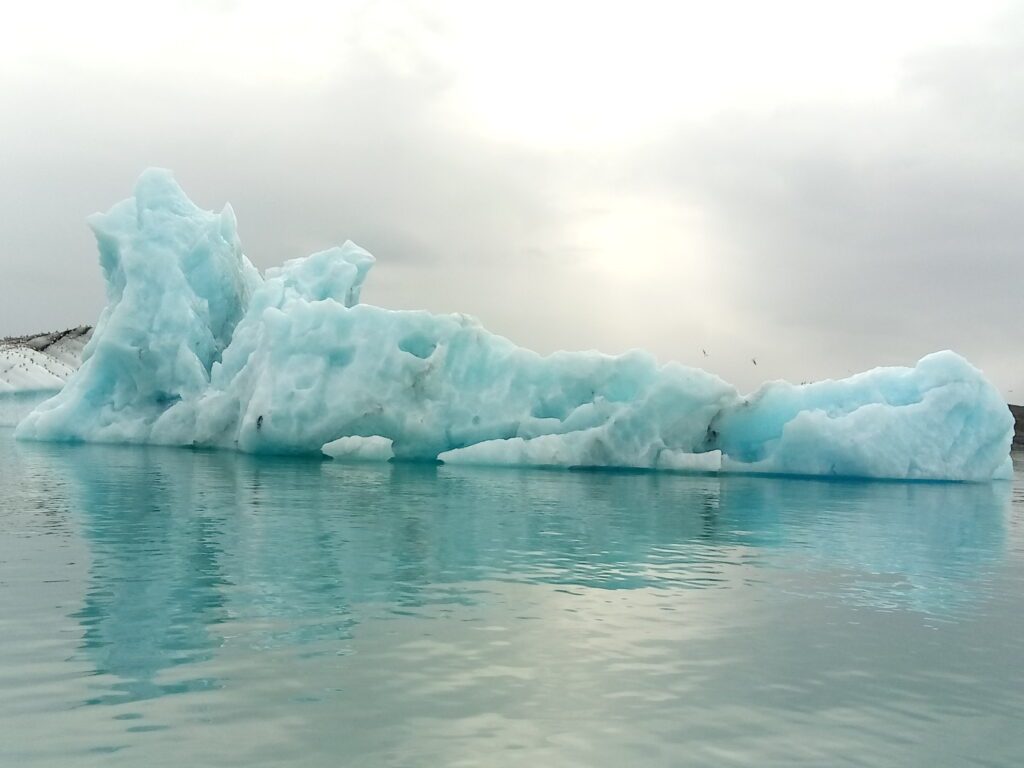
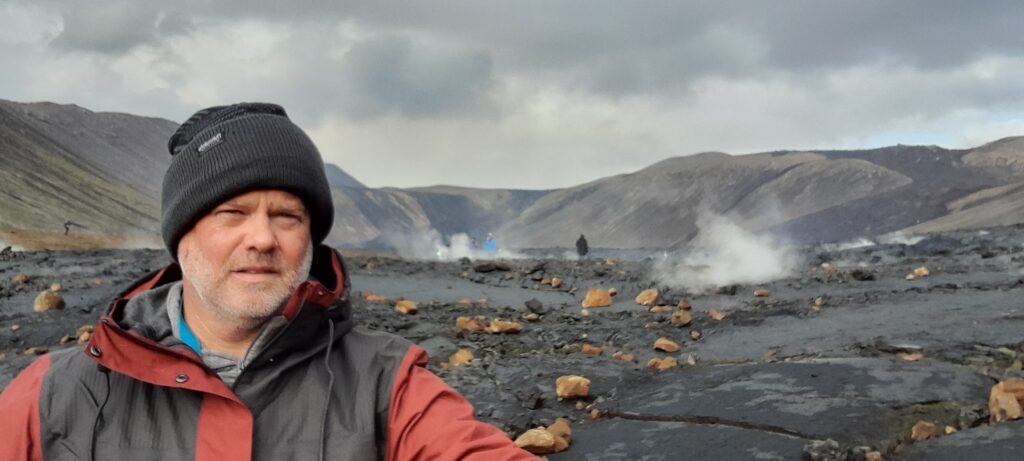
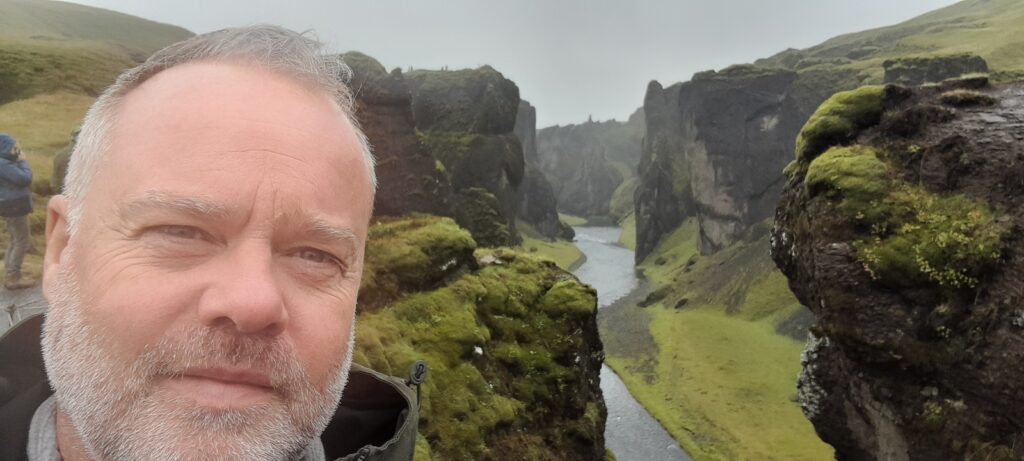
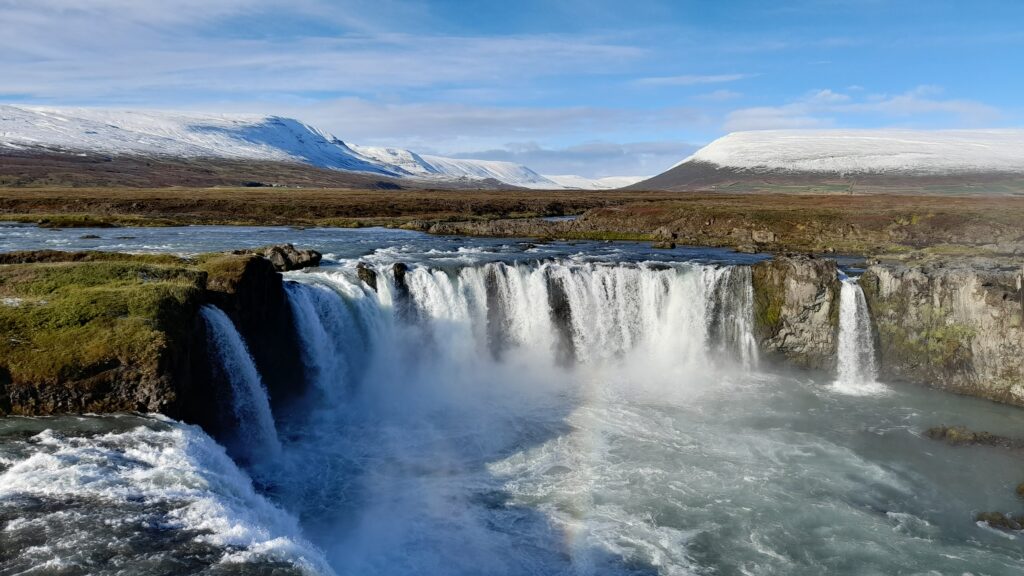
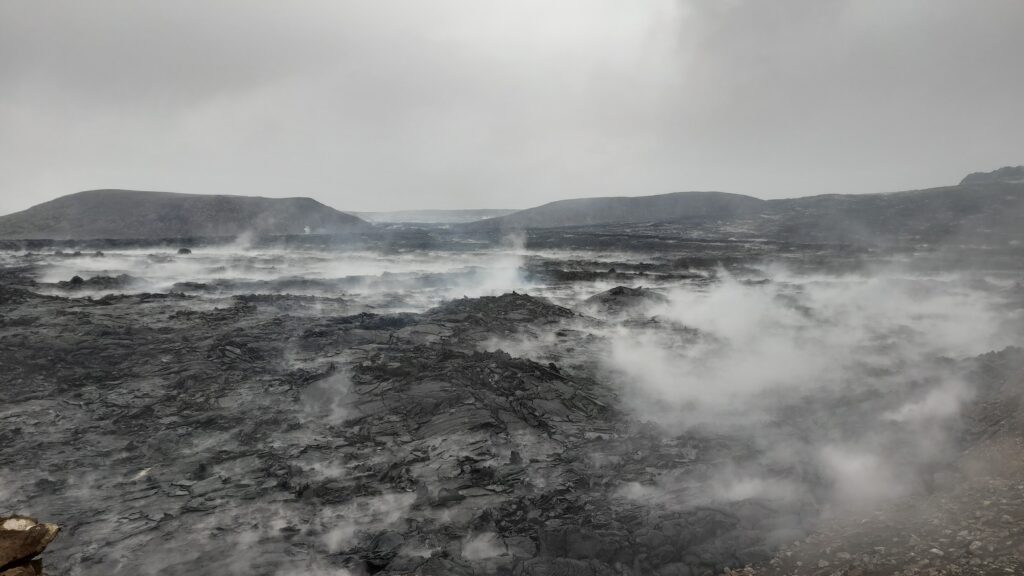

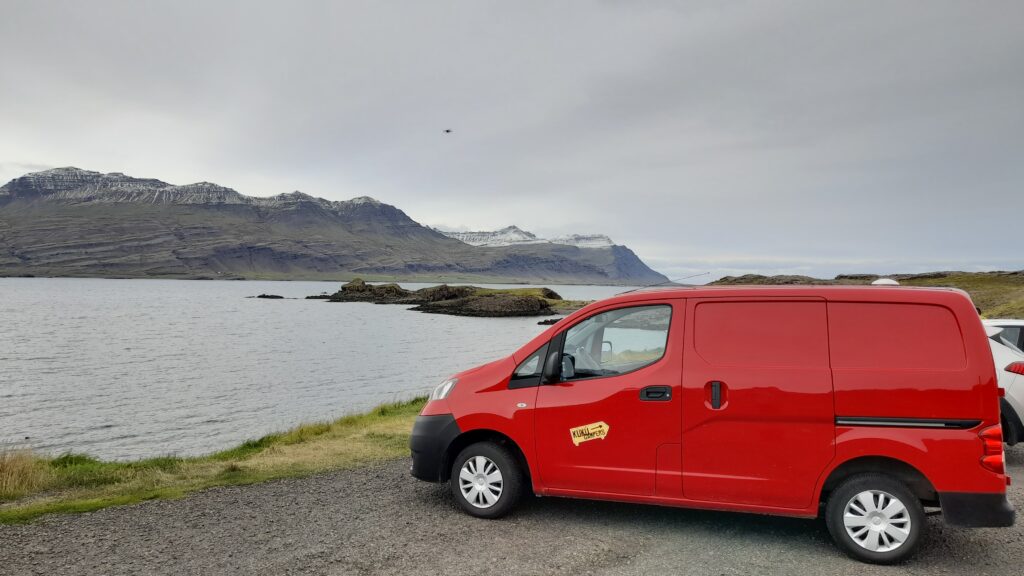
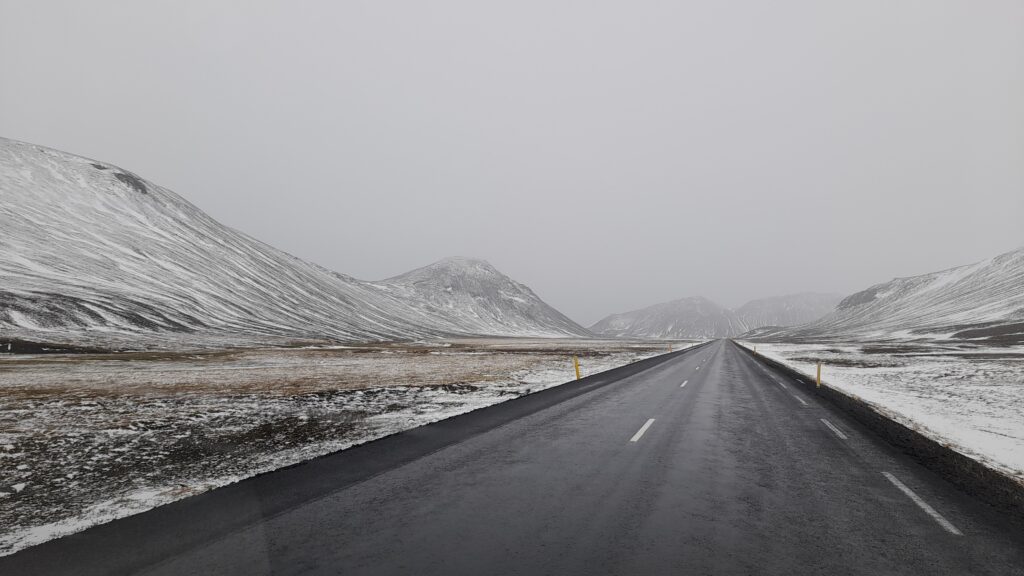
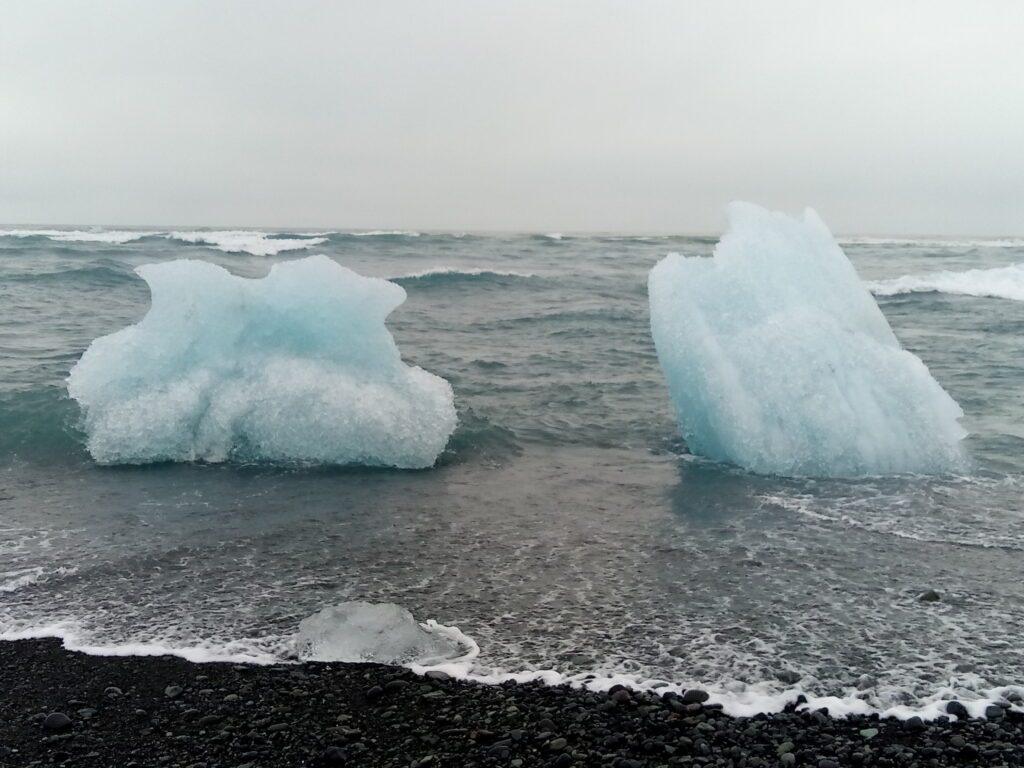
Book a guided tour
Don’ts
- Don’t litter
- Littering is not only disrespectful to the environment but also illegal in Iceland. Here are some tips to help you avoid littering during your trip:
- * Use designated trash bins: Look for designated trash bins in public areas, such as parks and streets, and use them to dispose of your trash.
- * Don’t leave anything behind: When you are hiking or exploring nature, make sure to pack out everything you bring in, including food wrappers, water bottles, and other trash.
- * Be mindful of your waste: Reduce your waste by bringing reusable water bottles and food containers, and avoiding single-use plastics.
- Remember that keeping Iceland clean and beautiful is everyone’s responsibility. By being mindful of your waste and disposing of it properly, you can help protect the environment and ensure that future generations can enjoy the country’s natural beauty.
- Don’t disturb wildlife
- Iceland is home to a diverse range of wildlife, from whales and seals to birds and foxes. It’s important to respect and protect these animals during your trip. Here are some tips to help you avoid disturbing wildlife:
- * Keep a safe distance: When viewing wildlife, it’s important to keep a safe distance to avoid disturbing them. Use binoculars or a telephoto lens to get a closer look without approaching too closely.
- * Stay on designated paths: Stick to designated paths and trails to avoid disturbing natural habitats and nesting areas.
- * Don’t feed the animals: Feeding wildlife can disrupt their natural behaviors and lead to health problems. Avoid feeding any animals you encounter during your trip.
- * Keep noise levels down: Loud noises can startle and stress animals. Keep your voice down and avoid making sudden or loud noises when you are near wildlife.
- * Follow regulations: Iceland has strict regulations for interacting with wildlife, especially marine animals like whales and seals. Make sure to follow these regulations to protect the animals and avoid fines.
- Remember that Iceland’s wildlife is an important part of the country’s natural beauty and ecosystem. By respecting and protecting these animals, you can help ensure that they thrive for generations to come.
- Don’t underestimate the power of nature
- Iceland is known for its rugged and stunning natural beauty, but it’s important to remember that this beauty can also be dangerous. Here are some tips to help you stay safe and avoid underestimating the power of nature during your trip:
- * Follow warning signs: Many popular natural attractions in Iceland, such as waterfalls and hot springs, have warning signs posted to alert visitors to potential hazards. Make sure to read and follow these signs.
- * Be aware of weather conditions: Iceland’s weather can be unpredictable and change rapidly. Always check the weather forecast and be prepared for changes in conditions. Avoid hiking or driving in severe weather conditions.
- * Stay on designated paths: Many natural attractions in Iceland have designated paths and trails for visitors. Stay on these paths to avoid accidents and protect fragile ecosystems.
- * Respect barriers and fences: Barriers and fences are put in place for your safety and to protect the environment. Do not climb over or cross these barriers.
- * Bring appropriate gear: Make sure to bring appropriate clothing and gear for the weather conditions and activities you plan to do. This includes sturdy shoes, rain gear, and warm layers.
- Remember that Iceland’s natural beauty is a powerful force that demands respect and caution. By staying aware and prepared, you can enjoy the country’s stunning scenery staying safe and protected.
- Don’t stop on the road
- Stopping on the road is not only dangerous but also illegal in Iceland. Here are some tips to help you avoid stopping on the road during your trip:
- * Use designated parking areas: When you need to stop, look for designated parking areas or pull-offs. Iceland has many parking areas along popular routes and attractions, so plan ahead and use these areas to avoid stopping on the road.
- * Avoid sudden stops: If you need to slow down or stop, make sure to use your hazard lights and pull over to a safe spot as soon as possible. Avoid making sudden stops in the middle of the road.
- * Be aware of traffic: Iceland’s roads can be narrow and winding, so it’s important to be aware of other vehicles on the road. Avoid stopping in areas where it’s difficult for other drivers to see you or maneuver around you.
- * Use turnouts: Turnouts are designated areas on the side of the road where you can safely stop and let other vehicles pass. Use these turnouts when driving on narrow roads to avoid impeding traffic.
- Remember that stopping on the road is both dangerous and illegal in Iceland. By using designated parking areas and being aware of other drivers, you can avoid accidents and keep the roads safe for everyone.
- Don’t wild camp
- Wild camping, or camping outside of designated camping areas, is not allowed in Iceland. Here are some reasons why you should avoid wild camping during your trip:
- * Environmental impact: Camping can have a significant impact on the environment, especially in fragile ecosystems like Iceland’s. Wild camping can damage vegetation, disturb wildlife, and contribute to erosion.
- * Safety concerns: Iceland’s weather can be unpredictable and harsh, with strong winds and sudden changes in conditions. Camping in unprotected areas can be dangerous, especially during storms or extreme weather events.
- * Legal issues: Wild camping is not allowed in Iceland, and violating this rule can result in fines and legal consequences.
- * Lack of facilities: Wild camping often means lacking facilities like toilets, running water, and waste disposal, which can lead to environmental pollution and health hazards.
- Instead of wild camping, consider using designated camping areas or staying in a hostel, guesthouse, or hotel. Iceland has many camping areas with facilities like toilets, showers, and waste disposal. By using these designated areas, you can enjoy the natural beauty of Iceland while minimizing your impact on the environment and staying safe and legal.
- Don’t drink and drive
- Drinking and driving is illegal and dangerous in Iceland, and the consequences can be severe. Instead of drinking and driving, consider using public transportation, taxis, or designated drivers. Iceland also has many tours and activities that include transportation, so you can enjoy your trip without worrying about driving. Remember, drinking and driving is not only illegal but also dangerous, and it’s never worth the risk.
- Don’t hike on a glacier without a guide
- Glacier hiking can be hazardous, especially for those who are inexperienced or unfamiliar with the terrain. Glaciers are constantly moving and changing, and crevasses, ice caves, and other hazards can be hidden beneath the surface. A guide can help you navigate these dangers and ensure your safety. Instead of hiking on a glacier alone, consider booking a guided tour with a reputable tour operator. They can provide the necessary equipment and expertise to ensure your safety and enjoyment. By hiking with a guide, you can experience the beauty of Iceland’s glaciers while minimizing your impact on the environment and staying safe and legal.
- Don’t drive when it is stormy weather
- Driving in stormy weather can be dangerous in Iceland, and it’s important to take precautions to ensure your safety. Here are some reasons why you should avoid driving during storms:
- * Limited visibility: Stormy weather can reduce visibility on the roads, making it difficult to see other vehicles, pedestrians, or hazards. This can increase the risk of accidents and collisions.
- * Slippery roads: Rain, snow, and ice can make roads slippery and difficult to navigate, especially on winding or steep roads. This can increase the risk of skidding, sliding, or losing control of your vehicle.
- * Strong winds: Iceland is known for its strong winds, especially during storms, which can cause vehicles to veer off course or even tip over. This can be particularly dangerous on bridges or other exposed areas.
- * Road closures: In severe storms, roads may be closed or restricted, making it difficult or impossible to travel to your destination.
- Instead of driving during storms, consider postponing your trip or finding alternative transportation, such as public transportation, taxis, or shuttle services. If you must drive, make sure your vehicle is equipped with appropriate tires and chains, and drive slowly and cautiously, taking extra care on winding or steep roads. Remember, it’s always better to arrive late than to not arrive at all.
- Don’t go off-road
- The terrain in Iceland is delicate, and driving off-road can cause significant damage to the vegetation, soil, and wildlife. This can have long-lasting effects on the ecosystem and can take years or even decades to recover.
- Instead of going off-road, stick to designated roads and trails, and respect any signs or barriers that indicate that an area is off-limits. If you want to explore the natural beauty of Iceland, consider booking a guided tour with a reputable tour operator that follows responsible and sustainable practices. By respecting the environment and staying legal, you can help preserve Iceland’s natural beauty for future generations to enjoy.
- Don’t speed
- Speeding is against the law in Iceland and can result in significant fines and legal consequences, including license suspension or revocation.
- Instead of speeding, obey posted speed limits and drive at a safe and appropriate speed for the road conditions. Keep in mind that speed limits in Iceland can be lower than in other countries, and roads can be narrow or winding, so it’s important to adjust your driving accordingly. Remember, safe driving is not only important for your safety but also for the safety of others on the road.
- Don’t walk on a newly formed lava field
- Unbelievable but true, I have seen for myself how people walked on a new lava field as if they were in a theme park.
- Newly formed lava fields can be unstable and unpredictable, with hidden cracks and fissures that can be difficult to see. Walking on this terrain can increase the risk of falls or injuries. Lava fields can still be hot and emit dangerous gases, even if they appear to be cool and solid. Walking on a hot spot can result in burns or respiratory problems.
- Don’t drive on F-roads without a 4-wheel drive
- Driving on F-roads in Iceland can be challenging and requires a 4-wheel drive vehicle. Here are some reasons why you should avoid driving on F-roads without a 4-wheel drive:
- * Rough terrain: F-roads are gravel or dirt roads that can be rough, narrow, and winding. They can also have steep inclines or declines, and river crossings, which can be difficult to navigate without a 4-wheel drive.
- * Weather conditions: F-roads can be closed or impassable during certain weather conditions, such as heavy rain or snow, and can quickly become slippery and dangerous.
- * Legal requirements: Driving on F-roads without a 4-wheel drive is against the law in Iceland, and violators can be subject to fines or legal consequences.
- * Safety concerns: Driving on F-roads without a 4-wheel drive can increase the risk of accidents or getting stuck, especially if you are not experienced in off-road driving.
- If you plan to drive on F-roads, make sure your vehicle is equipped with 4-wheel drive and suitable tires, and check with local authorities or a rental car company to ensure you have the necessary permits and equipment. Always drive with caution and follow posted speed limits and road signs. By respecting the rules and being prepared, you can safely enjoy the stunning landscapes and scenery that Iceland has to offer.
Conclusion
In conclusion, Iceland is a unique and beautiful destination that offers a range of experiences for travelers. However, it is important to be a responsible traveler and follow certain do’s and don’ts to ensure a safe and enjoyable trip.
To recap, some of the do’s include respecting the environment, checking the weather, trying local cuisine, and enjoying the Northern Lights, while some of the don’ts include littering, disturbing wildlife, driving on F-roads without a 4-wheel drive, and hiking on a glacier without a guide.
By being mindful of these guidelines, travelers can help preserve Iceland’s natural beauty and cultural heritage, while also enjoying all that the country has to offer. It is important to remember that being a responsible traveler not only benefits the environment and local communities, but also enhances the overall travel experience.
So whether you’re exploring Iceland’s stunning landscapes, soaking in hot springs, or sampling local cuisine, remember to travel responsibly and leave only footprints behind.
People also read:
- The Blue Lagoon, Iceland’s Iconic Geothermal Spa
- The Golden Circle: Iceland’s Crown Jewel of Natural Wonders
- 10 must-see attractions for visitors in Reykjavik
- 10 most beautiful waterfalls in Iceland
- Capturing the Northern Lights in Iceland
- Iceland ring road in 10 days
- Vatnajökull National Park and Diamond Beach
- Driving in Iceland
- Renting a Campervan in Iceland
Spend the night at Reykjavik
Booking.comFAQ
The best time to visit Iceland depends on what you’re looking to see and do. If you’re planning to see the Northern Lights, the best time to visit is from September to April, when the nights are longest and the lights are most visible. However, it’s worth noting that Iceland’s weather can be unpredictable, and even during the winter months, it’s not uncommon for the lights to be obscured by cloud cover.
If you’re planning to see Iceland’s natural beauty, the summer months of June to August are the best time to visit. During this time, the days are long, the weather is mild, and the natural landscapes are at their most vibrant. This is also the best time to go hiking and trekking, as the trails are snow-free and accessible.
If you’re looking to combine Northern Lights viewing with other activities, Spring and Fall are the best options. During these seasons, the weather is milder, days are shorter and the Northern lights can be seen,
It’s worth noting that Iceland can be a popular destination, especially during the peak summer months, so it’s a good idea to book accommodation and activities well in advance to avoid disappointment.
Yes, Reykjavik, Iceland is generally considered to be an expensive city to visit or live in. The cost of living in Iceland is relatively high due to a variety of factors, including its isolated location, small population, and high standard of living.
In particular, food and drink, accommodation, and transportation costs in Reykjavik are relatively high compared to other European cities. For example, a simple meal at a restaurant can cost around 2,500-4,500 ISK (20-35 USD), while a beer can cost around 1,200-1,800 ISK (10-15 USD). Additionally, accommodation costs can also be high, with the average nightly rate for a hotel room in Reykjavik ranging from 15,000-25,000 ISK (120-200 USD) or more.
However, there are ways to save money while traveling in Reykjavik, such as staying in hostels, cooking your own meals, and using public transportation. Additionally, visiting during the shoulder or off-season can also help you save money on flights, accommodation, and activities.
Reykjavik is best known as the capital city of Iceland and its cultural and economic center. It’s a vibrant city with a unique blend of traditional Nordic charm and modern cosmopolitanism. Some of the most popular attractions and activities in Reykjavik include:
- The Northern Lights: Reykjavik is one of the best places in the world to see the Northern Lights, a natural light display in the sky caused by the collision of charged particles from the sun with atoms in the Earth’s atmosphere.
- Blue Lagoon: A geothermal spa located just outside Reykjavik, known for its milky blue waters and therapeutic properties.
- Icelandic Sagas: Reykjavik is home to the Saga Museum, where visitors can learn about the country’s fascinating Viking history and its legendary sagas.
- Hallgrimskirkja: The largest church in Iceland, Hallgrimskirkja is an iconic landmark in Reykjavik and offers stunning panoramic views of the city from its tower.
- Culture and Arts: Reykjavik is a hub for Icelandic arts and culture, with numerous museums, galleries, and theaters showcasing the country’s rich history and artistic heritage.
- Local Cuisine: Reykjavik is known for its delicious local cuisine, including traditional Icelandic dishes such as smoked lamb, fermented shark, and skyr (a type of Icelandic yogurt).
Overall, Reykjavik is a fascinating destination with a wealth of natural beauty, history, and culture to discover.
No, Iceland does not use the Euro. The official currency of Iceland is the Icelandic króna (ISK), which is divided into 100 aurar. Although Iceland is a member of the European Economic Area (EEA), it is not a member of the European Union (EU), and therefore does not use the Euro.
Visitors to Iceland can exchange their currency for Icelandic króna at banks and exchange offices, as well as withdraw cash from ATMs using their debit or credit cards. Many businesses in Iceland also accept major international credit cards such as Visa and MasterCard. However, it’s always a good idea to carry some cash when traveling to Iceland, especially when visiting smaller towns or rural areas where credit card acceptance may be limited.
The number of days you need to spend in Reykjavik largely depends on your interests, budget, and travel style. Here are some factors to consider:
- Activities: Reykjavik is a vibrant city with plenty of activities and attractions to keep you busy, including visiting museums, exploring art galleries, going shopping, trying local cuisine, and taking day trips to nearby natural wonders. If you want to see and do as much as possible, you may need 3-5 days in Reykjavik.
- Budget: Iceland can be an expensive destination, so your budget may determine how long you can afford to stay in Reykjavik. If you’re on a tight budget, you may want to limit your stay to 2-3 days.
- Season: Iceland experiences long summer days and short winter days, and the activities and attractions available may vary depending on the season. For example, in the winter months, you can see the Northern Lights and go ice caving, while in the summer months, you can go hiking, whale watching, and enjoy the midnight sun. You may want to plan your stay accordingly.
- Itinerary: If you’re planning a longer trip to Iceland, you may want to spend a few days in Reykjavik at the beginning or end of your trip to acclimate to the time zone and explore the city. Alternatively, if you’re only interested in Reykjavik, you may be able to see and do everything you want in 2-3 days.
Overall, I would recommend spending at least 2-3 days in Reykjavik to get a taste of the city and its culture, but you could easily spend more time there if you want to see and do more.
Yes, English is widely spoken in Iceland. In fact, it’s a mandatory subject in Icelandic schools from a young age, and most Icelanders speak it fluently. Many Icelanders also speak other languages, such as Danish, German, French, and Spanish.
When visiting Iceland, you should have no problem communicating in English, as it’s the most common language spoken by tourists and locals alike. Most signs, menus, and tourist information are also available in English.
Iceland is famous for many reasons, including its stunning natural beauty, unique geology, fascinating culture and history, and innovative approach to renewable energy. Here are some of the main reasons why Iceland has become a popular destination for travelers and an object of fascination for people around the world:
- Natural Wonders: Iceland is home to some of the world’s most spectacular natural wonders, including glaciers, volcanoes, geysers, hot springs, and waterfalls. The country’s otherworldly landscape and raw natural beauty have made it a magnet for adventurous travelers and nature enthusiasts.
- Northern Lights: Iceland is one of the best places in the world to see the Northern Lights, a natural light display in the sky caused by the collision of charged particles from the sun with atoms in the Earth’s atmosphere. The phenomenon can be seen from various locations in Iceland from September to April.
- Culture and History: Iceland has a rich cultural and historical heritage that dates back to the Viking age. The country is famous for its Icelandic sagas, a series of medieval literary works that tell the stories of Iceland’s early settlers and their heroic deeds.
- Geothermal Energy: Iceland is a world leader in the use of renewable energy, particularly geothermal energy, which is harnessed from the country’s abundant underground hot springs and geysers. Iceland’s innovative approach to sustainable energy has made it a model for other countries around the world.
- Outdoor Activities: Iceland offers a wide range of outdoor activities, including hiking, skiing, horseback riding, fishing, kayaking, and whale watching. The country’s vast and varied landscape provides plenty of opportunities for adventure and exploration.
This article may contain affiliate links. This means that we receive a small commission when you book something via these links. Of course, this does not cost you anything extra. Did our tips help you? We would love it if you book your trip via the links in the article above. Thank you so much.
Read more articles on my Iceland page.